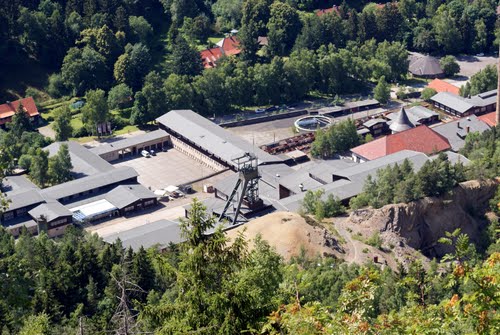The ore mines of the Rammelsberg are the only mines in the world which were in uninterrupted operation for over 1000 years. It and the medieval Old Town of Goslar with the Imperial Palace were placed on the UNESCO World Heritage List in 1992. Ten centuries of mining history are documented in the Rammelsberg, which shut down in 1988, leaving a large inventory of mining monuments: the slag heaps (10th century), the Rathstiefste Gallery (one of the oldest and best maintained galleries of German mining, 12th century), the Feuergezahe Vault (oldest underground stone-masonry mine chamber in Europe, 13th century), the Maltermeister Tower (the oldest above ground structure of German mining, 15th century), the Roeder Gallery (18th/19th century) with two original water wheels, and the above ground mining plant from the 1930’s.
With its wealth of nearly 30 million tonnes of ore the Rammelsberg influenced the history and development of the town of Goslar. The silver- and copper-rich Rammelsberg gave Heinrich II the impetus to establish a royal palatinate here in the 11th century; in 1009 the first imperial diet was held in Goslar. Goslar was a favourite residence of German kings and emperors until 1253. Trade in metals led to membership in the Hanseatic League.













